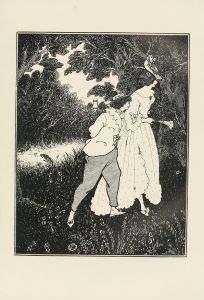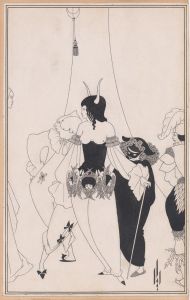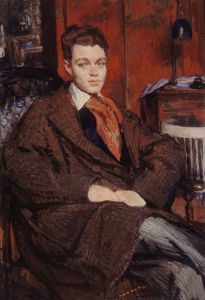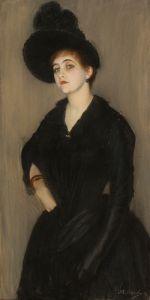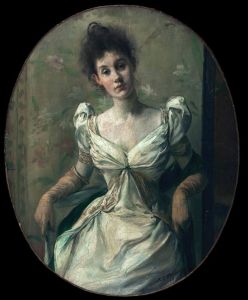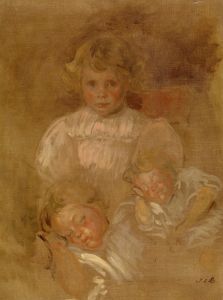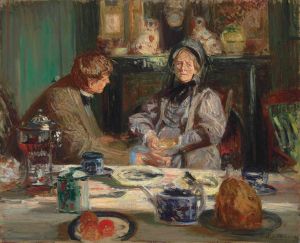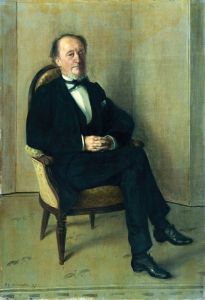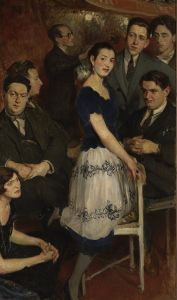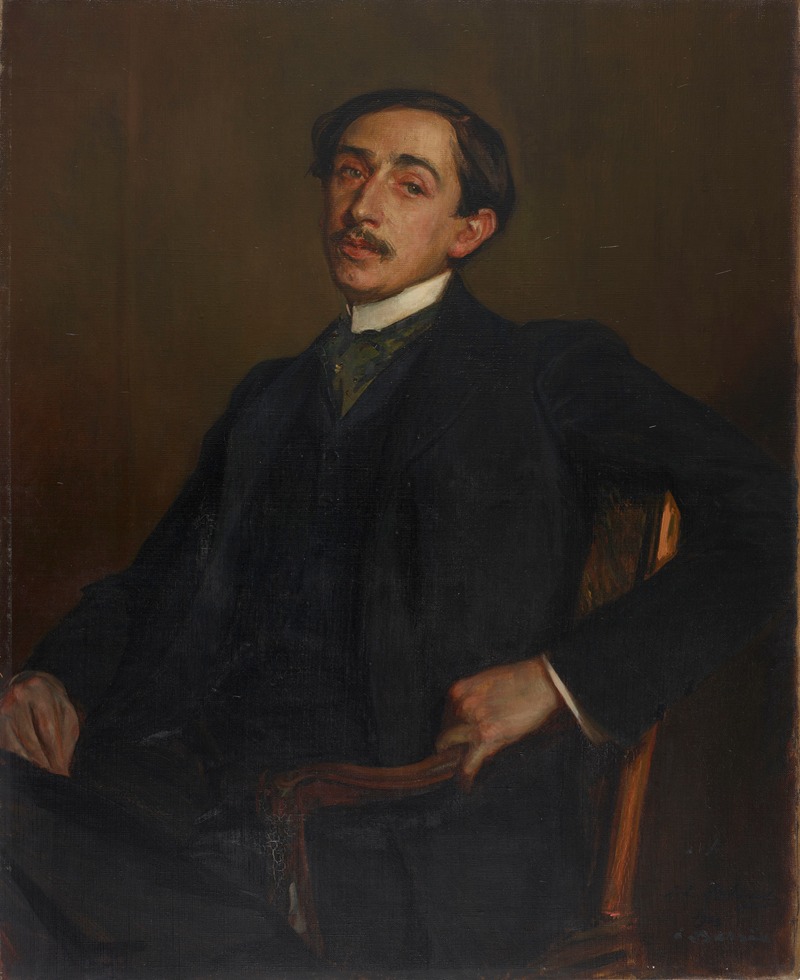
Portrait de Maurice Barrès
A hand-painted replica of Jacques-Émile Blanche’s masterpiece Portrait de Maurice Barrès, meticulously crafted by professional artists to capture the true essence of the original. Each piece is created with museum-quality canvas and rare mineral pigments, carefully painted by experienced artists with delicate brushstrokes and rich, layered colors to perfectly recreate the texture of the original artwork. Unlike machine-printed reproductions, this hand-painted version brings the painting to life, infused with the artist’s emotions and skill in every stroke. Whether for personal collection or home decoration, it instantly elevates the artistic atmosphere of any space.
"Portrait de Maurice Barrès" is a painting by the French artist Jacques-Émile Blanche, created in 1891. This work is a significant example of Blanche's portraiture, capturing the likeness of Maurice Barrès, a prominent French novelist, journalist, and politician known for his nationalist and conservative views. The painting is part of the collection at the Musée d'Orsay in Paris, which houses many important works of 19th and early 20th-century art.
Jacques-Émile Blanche was a well-regarded portraitist in his time, known for his ability to capture the personalities and social status of his sitters. Born in Paris in 1861, Blanche was deeply embedded in the artistic and literary circles of his era. He was known for painting many notable figures, including writers, artists, and musicians, which allowed him to document the cultural milieu of the Belle Époque.
Maurice Barrès, the subject of this portrait, was an influential figure in French literature and politics. Born in 1862 in Charmes, Vosges, Barrès became known for his eloquent writing and his involvement in the political landscape of France. His works often explored themes of identity, nationalism, and the individual's relationship to society. Barrès was a member of the Académie française and served as a deputy in the French National Assembly, where he was known for his nationalist and sometimes controversial views.
In "Portrait de Maurice Barrès," Blanche employs a style that is both realistic and expressive, capturing the intellectual intensity of Barrès. The painting is characterized by its subtle use of color and light, which highlights the thoughtful expression on Barrès' face. Blanche's technique reflects the influence of both traditional portraiture and the emerging modernist trends of the time, balancing detail with a sense of immediacy and presence.
The portrait is notable not only for its artistic qualities but also for its historical context. It provides insight into the cultural and intellectual environment of late 19th-century France, a period marked by significant social and political change. Through this work, Blanche contributes to the visual documentation of the era's influential figures, offering a glimpse into the personalities that shaped French society.
Blanche's relationship with his sitters often went beyond the canvas, as he was known to engage with them socially and intellectually. This connection is evident in the way he portrays Barrès, capturing not just his physical appearance but also a sense of his character and intellect. The painting remains an important piece within Blanche's oeuvre and continues to be appreciated for its artistic merit and historical significance.
"Portrait de Maurice Barrès" exemplifies Jacques-Émile Blanche's skill as a portraitist and his ability to convey the essence of his subjects. It stands as a testament to the rich cultural tapestry of the time and the enduring impact of both the artist and the sitter on French art and society.





